Imagine sending a spacecraft to visit an asteroid, collect a sample of it and return it to Earth for analysis.
This futuristic concept sounds like something from science fiction, but these days it's science fact.
Missions like these are called 'sample-return' missions, and they give scientists a unique opportunity to study pristine space rocks in high-tech laboratories.
One such mission is OSIRIS-REx, which on 24 September 2023 successfully returned a sample of asteroid Bennu to Earth, and scientists have been studying it ever since.
Just a handful of UK scientists are getting the chance to have a look at the Bennu sample, one of whom is Sara Russell, a planetary scientist at the Natural History Museum.
We got the chance to speak to Sara about why we study space rocks, what sort of tests she is undertaking with the Bennu sample, and what it could reveal about planet Earth and the wider Solar System.
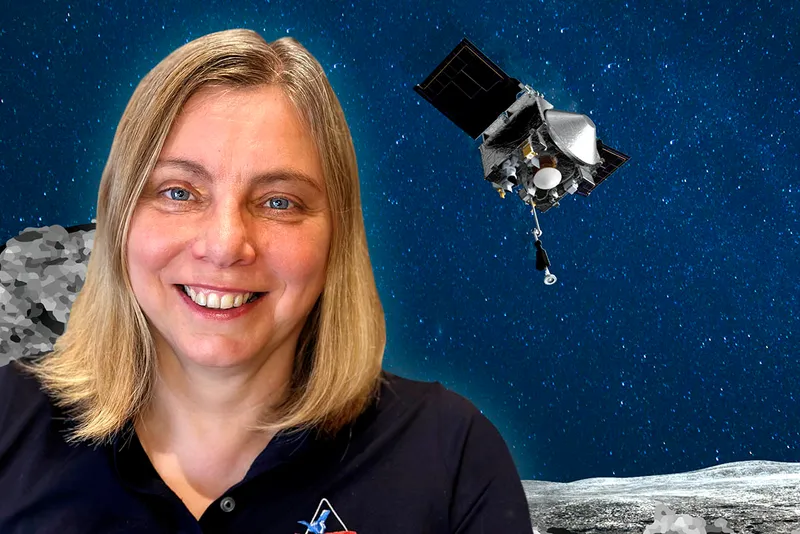
Why do we study space rocks?
We're really lucky at the museum. We've got a fantastic collection of space rocks, all of which fell to Earth.
Nearly all of them fell naturally as meteorites. Most of the meteorites that we have came from asteroids, but a handful come from the Moon and a handful come from Mars.
The asteroid meteorites are really cool, because asteroids are 4.5 billion years old: they formed at the same time the Sun and the planets were forming.
But unlike the planets, which have undergone loads of geology, volcanoes et cetera., asteroids have remained in pretty much the same state for 4.5 half billion years.
They give us a real look back in time, a snapshot helping us understand how planets formed.

How did you and the Natural History Museum get involved with OSIRIS-Rex?
OSIRIS-REx is a super exciting mission that has been in the planning for many years, and launched in 2016 from Cape Canaveral.
I was lucky enough to go out there and watch it launch. It was so exciting.
We got involved because at the museum because we've been interested for a long time in these asteroidal meteorites that resemble asteroids like Bennu, which was the target of the OSIRIS-REx mission.
Bennu is a very dark coloured asteroid and we think it's dark because it contains a lot of carbon.
When the spacecraft went to visit it, it spent a couple of years going round the asteroid, getting data from it, and found out that it looked like it contained water.
This is similar to many of the meteorites that we see in our collection that we've been working on.
For that reason, we were invited to get involved in looking at the sample when it came back to Earth.
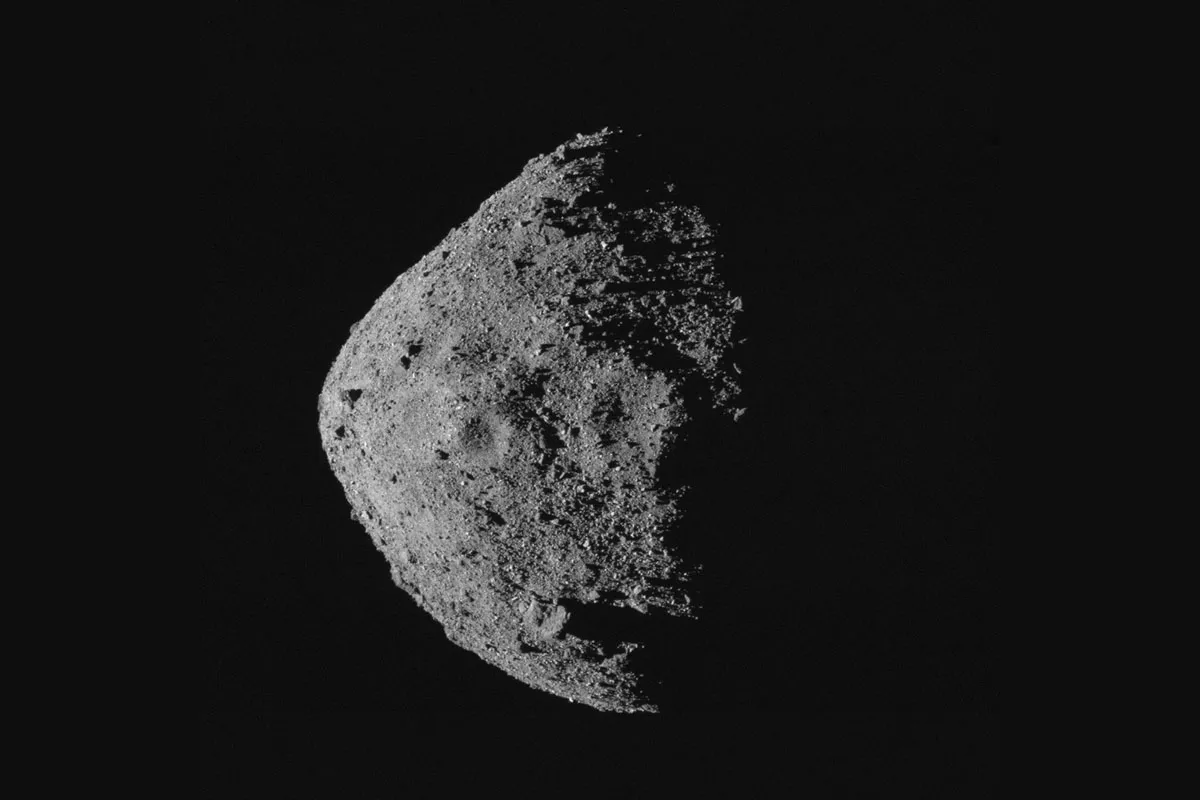
Were UK facilities consulted as to what sample would be collected by OSIRIS-Rex?
Yes, absolutely. There is a handful of UK institutions involved in the mission.
There's the Natural History Museum, there's the University of Manchester, there's the Open University and the University of Oxford.
The University of Oxford in particular were involved in that part of the mission, when the spacecraft was visiting the asteroid, because they specialise in spectroscopy and looking at the composition of the rock from space.
To some extent, all the scientists were involved in deciding where we would collect the sample from that would return to Earth.
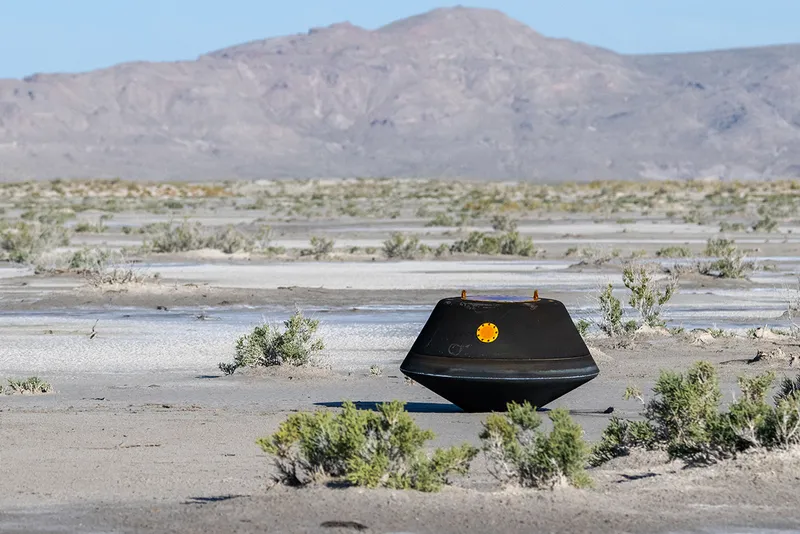
How much of a sample of Bennu have you received?
We've received about a teaspoonful. It's 100 milligrams.
It turns out the asteroid is actually not very dense at all, so even though a hundred milligrams doesn't sound like a lot, it looks more than you would expect.
It's a good teaspoon of very dark, fine grains of asteroid. The individual grains that we’ve got are up to about a millimetre in size.
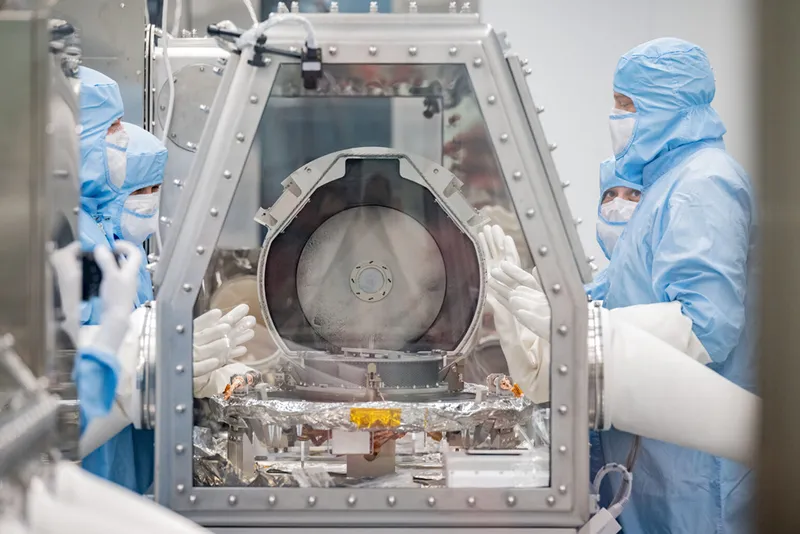
What are the differences between the sample collected by Bennu and samples that fall to Earth?
There are a few reasons it's good to go out into space, get a piece of asteroid and bring it back to Earth, rather than wait for a meteorite to fall.
When a meteorite falls, we rarely know exactly where it's come from.
It's a bit of a guess, firstly to find out what sort of body, whether it's an asteroid or a planet or a moon or whatever.
And also, once we know it's an asteroid, finding out exactly which asteroid it may have come from is always a bit of a puzzle.
An advantage of going out into space and collecting the sample is that you can do a lot of geological fieldwork, looking at the asteroid in great detail so you can better understand the context of where the sample came from.
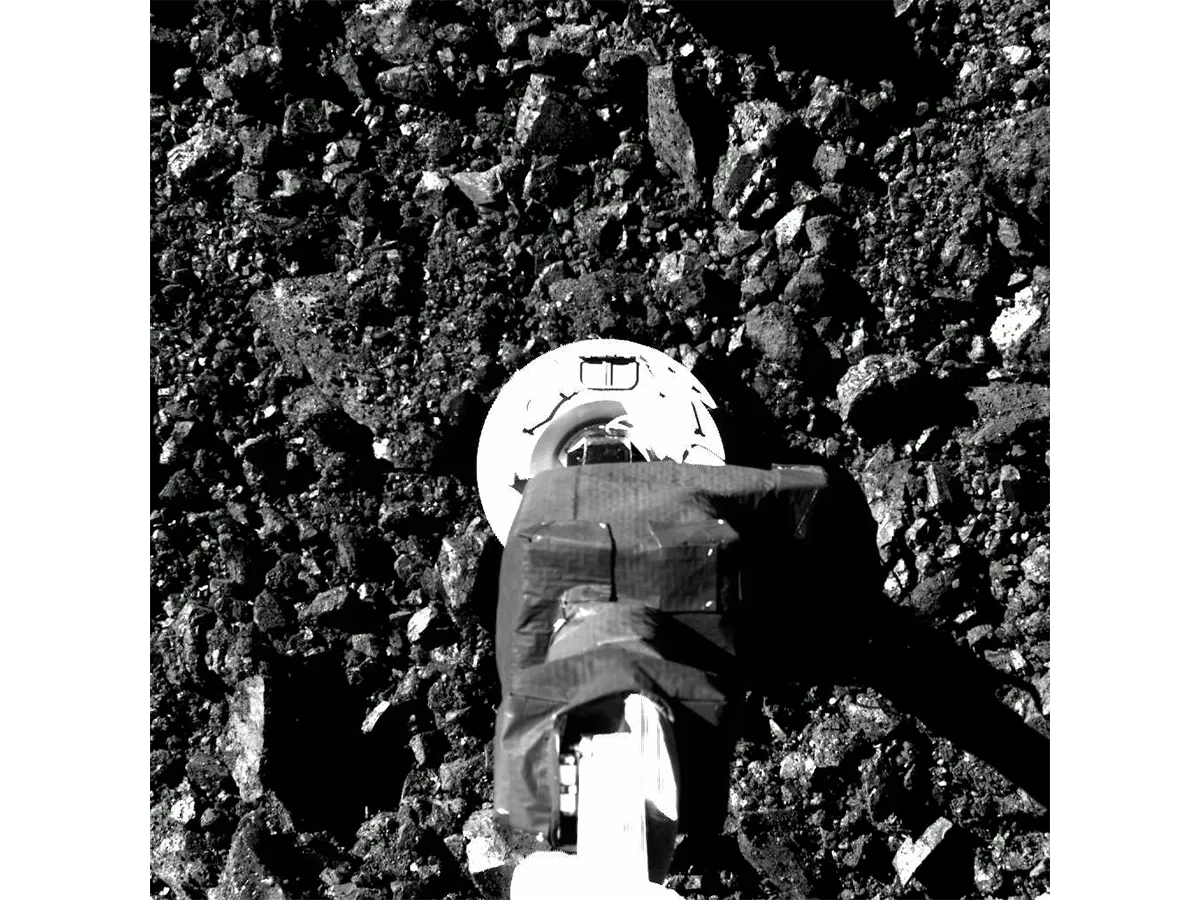
And asteroids like Bennu are actually quite a fragile, friable kind of rock, so it's quite rare for rocks like that to make it down to Earth as meteorites.
The other reason it's great to have a sample return mission is that every meteorite that falls to Earth, as soon as it enters Earth's atmosphere, it starts interacting with the air.
It lands on the ground, it might get wet, it might have worms crawling on it, all of those things are contaminating it.
But if we bring it back in a spacecraft, that means we can keep it pristine.
Our sample is kept in a nitrogen glove box. It's never seen oxygen from the air.

It sounds quite futuristic!
It's absolutely amazing. It's such an ambitious project. It's just incredible that humans can do this.
I'm really in awe of all of the engineers that got us to this point.
Now that you have the Bennu sample, what are you doing with it?
At our museum we specialise in mineralogy, so we're looking at exactly what the rock is made of.
We're using a type of instrument called XRD, x-ray diffraction, which will look at the structure of the crystals inside the rock.
We're doing CT scanning on each individual grain, which tells us what the internal structure looks like, the same way a medical CT scanner works.
And we’re using electron microscopes to look at it in great detail, and that will also tell us what the chemistry of the sample is.
We're doing a whole battery of tests, and most of these are non-destructive, which means once we're done, the samples can be passed to other labs for other work that might be more destructive.

How do you avoid exposing it to oxygen?
Unfortunately, we can't keep it in its lovely, pristine nitrogen glove box forever, because we need to expose it to air while putting it in the instruments.
The grains that come out to be analysed will be exposed to air as they come out.
But the main part of the sample we're keeping in nitrogen as much as possible.
How do you examine individual grains?
The sample analysis part of the mission is due to last about two years, and I think that's a fairly good estimate of the amount of time we're going to be working on it.
Pieces will be kept in perpetuity as well for future generations to be able to use.
It takes a long time. We pick the grains out, grain by grain, using tweezers.
Sometimes even tweezers are too coarse. We use a little needle, get a grain stuck to the tip of the needle and try moving it around that way.
It requires good eyes, steady hands and strong nerves!

What are you hoping to find?
We're hoping to find that Bennu might be one of the most volatile, rich extra-terrestrial materials that we've had to study on Earth.
Because the asteroid looks like it contains lots of carbon and lots of water, it has a very low density.
What we're expecting or hoping to find is that it probably accreted further out in the Solar System in a place that was much colder, because it's further away from the Sun
It accreted with ices and organic material and then was transported into the innermost part of the Solar System, where it’s a little bit hotter, but it kept this primordial composition.
We're really interested in that because it could be that asteroids like Bennu actually impacted the early Earth and brought the carbon and water that was needed to create our habitable planet.

Can it tell us anything about the rest of the Solar System?
Yes, we think that Bennu may contain grains that were formed in the protoplanetary disk; inside the dusty disk from which our Sun and the planets formed.
By looking at these individual little grains, we can find out things like what the pressure, temperature, composition, the time scales of the protoplanetary disk were.
We can learn something about whether objects moved around that disk from the innermost part to the outermost part or back again.
Is there a collaboration with other sample-return missions, like Hayabusa2?
Hayabusa2 was the first sample return mission to a primitive asteroid that looks a little bit like Bennu, one of these dark C-type asteroids.
The OSIRIS-REx team call Hayabusa2 their sister mission, and there's going to be a lot of comparison of the samples that were brought back.
We're incredibly lucky to be working at this time when there are these two missions that both went to these amazing asteroids and brought material back
We've got all of this exciting material to study and compare.
One of the things we want to look at is the diversity of asteroidal material that's out there.
And that will help us look in a little bit more detail at exactly what might have been impacting Earth and contributing to Earth as it was growing and in its later stages of formation.
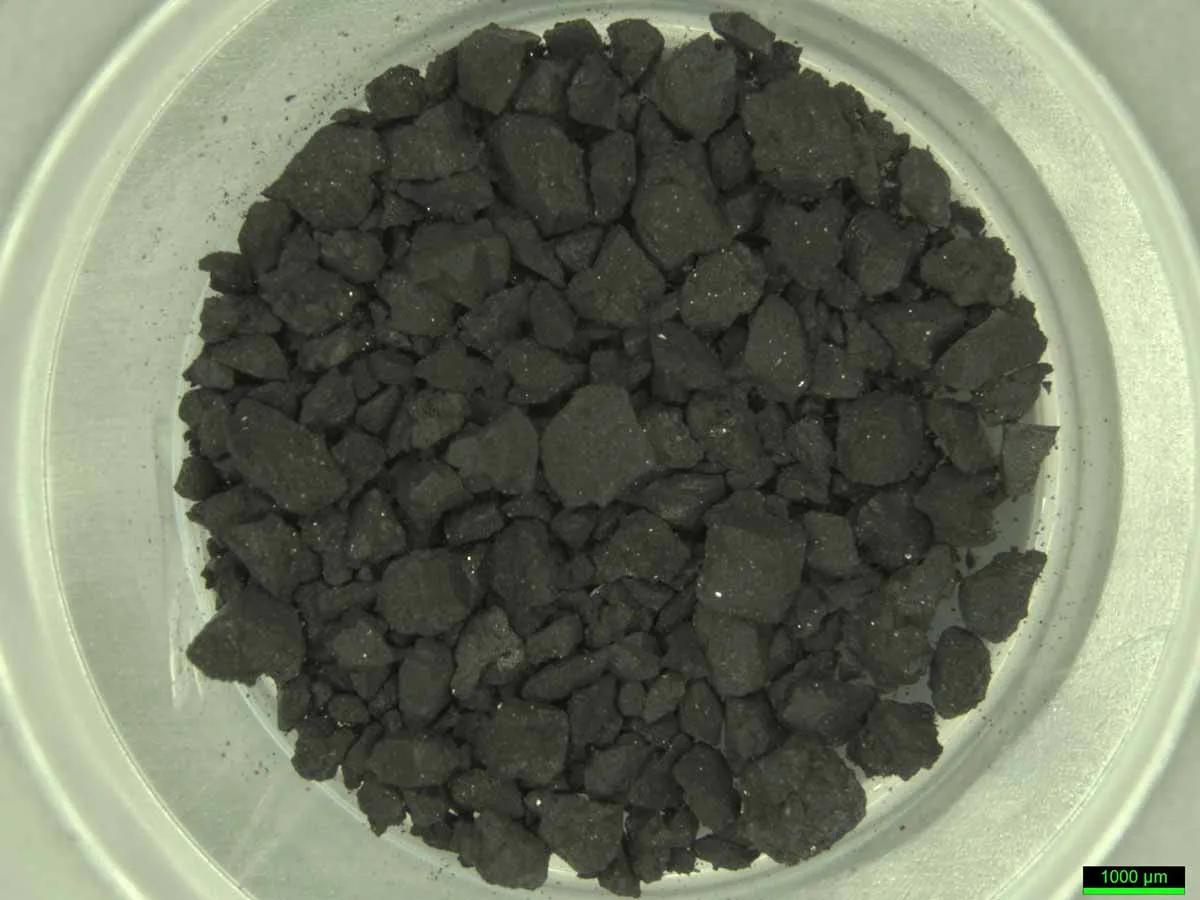
Do you compare asteroid samples to Moon samples brought back by the Apollo missions?
Yes, absolutely. One of the things asteroids and our Moon have in common is that they're both airless bodies and have both been subject to what's called space weathering, which is the interaction of energetic particles on the surface of the body.
We can compare the asteroid rocks returned from the surface of the asteroid with the lunar rocks which were also very much surface rocks.
We know that they were surface rocks, we can compare them to look at how they've been differently or similarly space weathered, which can help us understand how rocks interact with their environment.

Do you think about potential future sample return missions, like to the Asteroid Belt or even the Kuiper Belt?
Oh, absolutely. There are so many places to go, and I think minor bodies in the Solar System are very much neglected but they're an incredibly diverse group of objects and we're only scratching the surface of what we know about them.
Some asteroids seem to be made mostly of metal, for example, and it'd be great to bring that back down to Earth.
There are the E-type asteroids, which may be inner Solar System asteroids.
They may have made a really important contribution to the material that accreted to form the Earth, so they would be great to have a closer look at.
And it would be incredible to go out to the Kuiper Belt and collect from an icy world.
The dream would be to try to bring it back with its ice intact so we could study the ice the same way that we study our rocks.
We could look at exactly what that crystal structure is, for example, and how the rock and ice are interacting with each other.
And perhaps the ultimate dream is if we could one day collect a sample from an interstellar asteroid that's an interloper that comes into our Solar System.
That could tell us something about worlds even beyond our Solar System.

That's all a bit sci-fi at the moment, but there's one incredible mission that is definitely going to happen, which is called MMX.
This is the next Japanese sample return mission, and that's going to collect a piece of Mars's moon Phobos.
That's a really exciting mission because currently we don't really know how Phobos formed.
It might be a captured asteroid or it may have formed by an impact into Mars’s surface. There's still so much to learn about it.
When are you presenting your first findings from the Bennu sample?
There's a big conference in Houston every year called the Lunar and Planetary Science Conference.
This conference started the year after rocks were brought back from the Moon and it's been going every year since.
That's where the first data from OSIRIS-REx will be presented, so we're working towards the target of presenting there.
The Lunar and Planetary Science Conference 2024 begins on 11 March.
